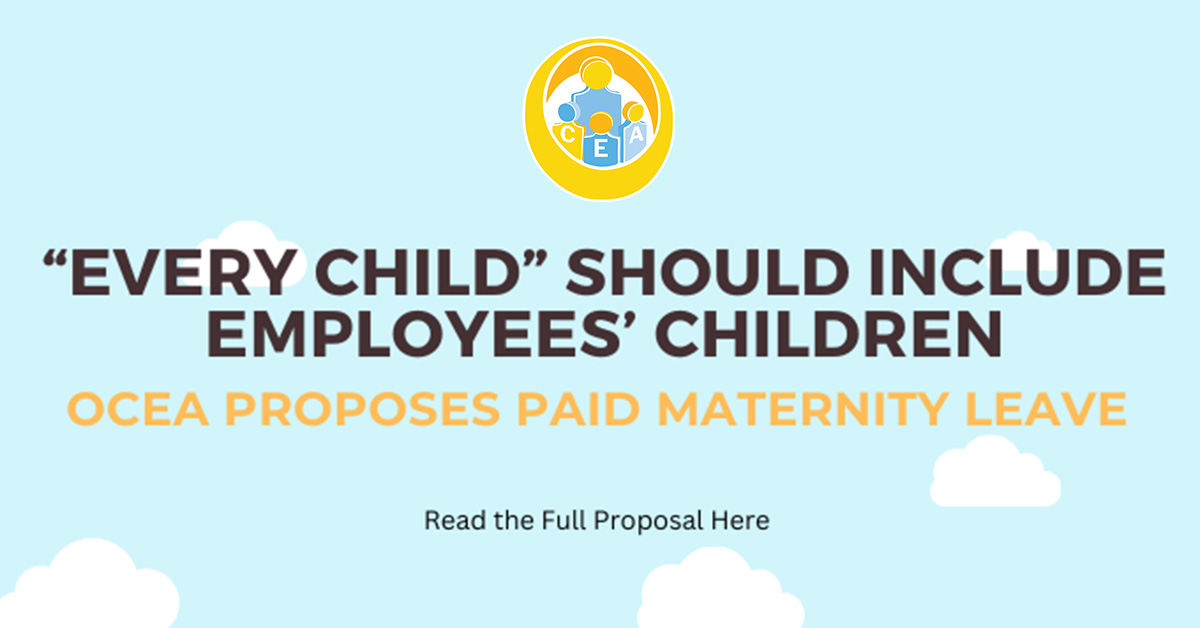Paid Maternity Leave Proposal
Rationale/Summary:
According to the National Center for Education Statistics women make up 77 percent of the teacher population. Education is undoubtedly a female dominated profession. Due to this fact, it would be a great strategy for districts, such as ours, to provide specific benefits that would retain and attract women specifically.
The financial strain created by having a child with our current leave structure and health insurance shortcomings puts our employees in a situation where they are more likely to look elsewhere for career opportunities. By providing for 8 weeks of paid maternity leave we will encourage the following outcomes.
- Decrease the probability that mother or child is rehospitalized because of the employee returning to work too soon
- Increase the probability that the employee returns to work and stays with our district for a longer duration
- Increase our success in talent acquisition by marketing a benefit that other school districts are not offering
- Increase the economic security of our employees and children in our community
OCEA believes that this initiative will not only be beneficial to the health of our employees but also for the health of the district. OCEA also believes that this benefit will prove to be cost-neutral over time and not put a financial strain on the district while simultaneously taking financial strain off our employees starting and expanding their families. Ultimately, the most significant reason to adopt and approve this proposal is because it is the right thing to do.
Employee Cost Scenario:
If a member of our instructional staff who has a salary of $52,000 takes their 12 weeks of FMLA (unpaid), utilizes 6 weeks of their short term disability insurance at 67% of their pay and is fortunate enough to be able to take 10 sick days, their lost income would be the following cost.
12 weeks salary: -$13,000
10 sick days (2 weeks): + $2,166.67
6 weeks short term dis @ 67%: + $4,355
Lost income in this scenario: $6,479
This loss of income as they start the life of a child is unacceptable. This is not including the cost of medical bills, etc. When adding prenatal care and medical bills of the mother and child many of our employees are hitting their out of pocket maximum. This drives the total cost of having a child easily over $10,000. We can mitigate the financial impact through providing 8 weeks paid maternity leave.
Costs associated with this proposal:
Based on data provided by Risk and Benefits, the number of employees submitting claims related to pregnancy/childbirth over the last 6 years is as follows:
2017-18: 75
2018-19: 78
2019-20: 91
2020-21: 68
2021-22: 68
2022-23: 88
This is data including all employees, not just instructional staff. Therefore the numbers would likely be less than if only including employees in the Instructional bargaining unit.
The following cost has been calculated if 80 instructional employees utilize this benefit at a $52,000 salary
Approximate maximum cost of the paid out 8 weeks of pay: $693,333
Cost Savings
There would still be 4 weeks of unpaid salary not being paid which was already budgeted for.
Unpaid Salary: $346,560
There will be other long-term cost savings associated with employee retention and externalized
costs to the health insurance plan associated with rehospitalization.
Annual new budgetary impact: $346,773
Things to consider other than annual cost
- According to the Institute for Women’s Policy Research, mothers who used paid leave had only a 2.6% probability of quitting their job and a 92.3% probability of returning to the same employer after birth. In comparison, mothers who did not utilize paid leave had a 34.3% probability of quitting their job and a 73.3% of working for the same employer post-birth.
- This data suggests that offering this benefit will have a positive impact on employee retention. This cost savings associated with less turnover is well documented in labor statistics. Based on this data combined with the data provided by Risk and Benefits the estimated annual cost savings associated with less turnover would be approximately $110,000.
- According to the National Library of Medicine, women who took paid maternity leave experienced a 47% decrease in the odds of infant and maternal re-hospitalization
- This data suggests that we can not only increase the probabilities of good health outcomes for new mothers and babies by providing paid maternity leave, but we can also save on healthcare costs by reducing the probability of re-hospitalization.
- The employee cost scenario provided on page one would be mitigated to a large degree by this benefit. In fact, if an employee used 10 sick days, the short-term disability insurance and their 8 weeks paid maternity leave, they would have a wage surplus of about $1,700 (which would help pay for medical costs). If an employee did not have any sick days, they would lose only $430 dollars in lost wages due to their pregnancy.
The average woman has two children. That would mean that they would be paid 16 total weeks of maternity leave, assuming they had both children while employed by SDOC. If our goal is to keep people here for their whole career, then 16 weeks in exchange for 30 years of service is not a bad deal at all for district management.
We should be trying to empower our employees to provide for a healthy home- life. If we do that, they will undoubtedly be more productive when at work, have increased morale, and be more likely to make Osceola County School District their 30 year career “home”!

